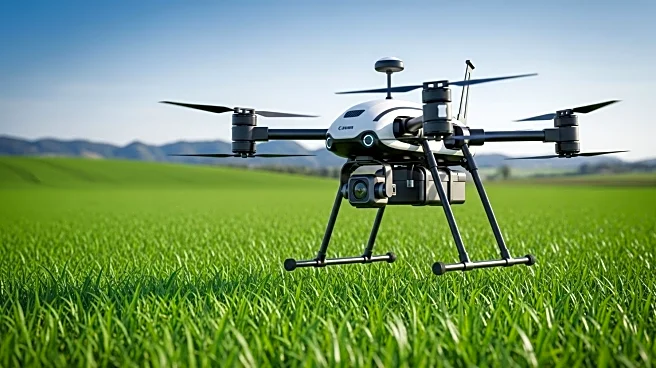What is the story about?
What's Happening?
AI detection technology is being increasingly utilized to combat the rise of 'paper mills' in academic publishing. These organizations produce scientific papers on demand, often using generative AI to create seemingly original content. Traditional plagiarism detection systems, which focus on identifying text matches, often fail to catch AI-generated articles. However, AI detection models can analyze linguistic style and structure to identify machine-generated content. A Stanford University study found that AI detection models correctly identified generated sections in 90% of cases involving longer academic texts. This technology is becoming essential for publishers to ensure the authenticity and credibility of scientific publications.
Why It's Important?
The use of AI detection in academic publishing addresses the growing challenge of maintaining integrity and credibility in scientific research. As paper mills exploit AI to produce fraudulent content, publishers face increased pressure to implement effective detection methods. AI detection enhances the peer-review process, providing editors and reviewers with tools to assess the authenticity of submissions. This technology supports ethical standards and compliance with international database requirements, such as those set by Scopus and Web of Science. By ensuring the authenticity of published content, AI detection helps protect the reputation of academic institutions and the integrity of scientific research.
What's Next?
The adoption of AI detection technology in academic publishing is likely to expand, with more publishers integrating these systems into their anti-plagiarism processes. As AI continues to evolve, detection methods will need to adapt to new challenges, such as increasingly sophisticated generative models. Collaboration between publishers, researchers, and technology developers will be crucial in developing effective solutions to combat academic fraud. The broader implications for research ethics and the role of AI in scientific communication will be explored by industry leaders and policymakers, potentially leading to new standards and regulations.
Beyond the Headlines
The rise of AI-generated content in academic publishing raises ethical and legal questions about authorship and accountability. As AI systems become more involved in research production, ensuring transparency and proper attribution of contributions is essential. The use of AI detection technology highlights the need for robust safeguards to protect the integrity of scientific research. Additionally, the reliance on AI for content creation may shift the focus from human-led research to machine-driven processes, potentially altering the dynamics of academic collaboration and inquiry.
AI Generated Content
Do you find this article useful?













